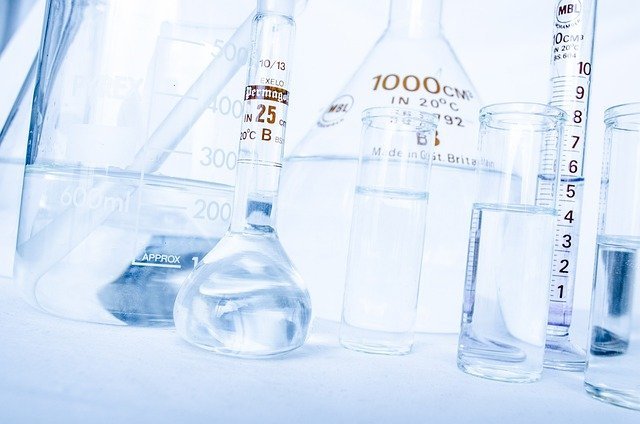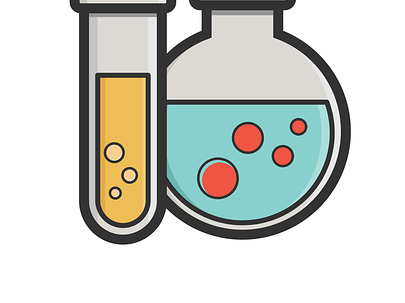Electrical conductivity is the reciprocal of resistivity and describes how easy it is for electric current to flow through a material. Conductivity is a property of a substance that describes how easily an electric current can flow through it.
This is measured in units called ohms per square meter (ohm/m) or Siemens per meter (S/m) and is often expressed as mS/cm. The SI unit for electrical conductivity is Siemens (S), abbreviated as mS/cm. Conductivity is measured by placing two electrodes in contact with the material to be tested and measuring the amount of current that flows between them.

Electrical conductivity in acids and bases.
Acids and bases are usually very well-known in everyday life. They are widely used for a variety of purposes, including cleaning and disinfecting. They are also used in many different industries, such as the food industry. Acids and bases are measured using electrical conductivity. This is because the presence of ions in the water will cause an electric current to flow through the water. Conductivity is measured in units called siemens per meter (S/m). The SI unit for conductivity is the siemens per meter (S/m).
The conductivity of acids is measured as negative conductivity, while that of bases is measured as positive conductivity. Acidic substances have high electrical conductivity; basic substances have low electrical conductivity. Acidic substances react with metals like aluminum or silver, causing corrosion. Water can be a very effective solvent when it reacts with acids. Water molecules break apart into hydrogen ions (H+) and hydroxide ions (OH–), which then create an electric current.
Acids that dissolve well in water include caustic soda, lye, and hydrochloric acid. Bases form salts with metals like sodium or potassium. When metal salts come into contact with water, they corrode certain metals like copper or lead. Acetic acid is an example of an acid that dissolves in water easily.
Acids can conduct electricity much better at low temperatures, but at high temperatures, they become less effective at conducting electricity because there’s not enough energy available for them to break down into ions or molecules. Bases will generally have lower values at higher temperatures, due to reduced solubility and ionization. The actual value that you get from your solution depends on all these factors so it’s important to keep all of these factors.
About acids and bases.
Acids and bases are two chemical compounds that are composed of a hydrogen atom and an oxygen atom. They are characterized by their chemical reactivity. Both acids and bases have a greater affinity for hydrogen ions than they do for other types of molecules, such as water molecules.
They are also much more reactive than neutral molecules. The acid-base properties of a substance determine its pH value, which ranges from 0 to 14. A pH value of 7 is neutral; the lower the number, the more acidic the solution. The higher the number, the more alkaline the solution is. Acidic substances are marked by a low pH value, while basic substances have a high pH value. Bases can be either strong or weak.
Acids can be either strong or weak depending on how many hydrogen ion (H+) ions they can donate to another substance. Strong acids donate H+ ions readily and thus have a stronger acidity than weak acids that donate fewer H+ ions. Examples of strong acids include vinegar and hydrochloric acid (HCl). Weak acids that donate fewer H+ ions include acetic acid (CH3COOH) and citric acid (CH3COOH). Weak bases also donate H+ ions, but are weaker base-lenders than strong acids; examples include ammonia (NH3) and baking soda (NaHCO3).
Resistance in Electrical conductivity.
Electrical conductivity is a property of matter that describes its ability to contribute to an electrical current. It is measured in units of siemens per meter (S/m). A substance’s conductivity can be thought of as the amount of electrical charge it can carry. The higher a substance’s conductivity, the more charge it can carry. Conductivity is measured by taking an object that has been immersed in a solution and measuring how much current flows through the object.
Different materials have different resistivities, which affect the amount of current they can carry. Common materials such as metals have very low resistivities, while nonmetallic solids like wood or rubber have high resistivities. Conductivity also depends on pH, so salts that are strong acids or bases have higher conductivities than neutral salts.
Examples of Electrical conductivity in acids and bases.
The solution can be any type of liquid or gas, including water, ethanol, and sodium hydroxide. In general, ionic compounds have a higher conductivity than covalent compounds do. A common example of a substance with high conductivity is saltwater. Saltwater has a high electrical conductivity because it contains many charged ions that are able to move freely within the liquid.
Acidic substances also have high electrical conductivity because they contain large amounts of charged particles called ions. These ions are able to pass through small spaces in the material more easily than other types of particles would. Much like saltwater, acidic substances are able to carry more charge than they would if they were not so strongly attracted to the electrons in an external electric field. Many acids and bases have low electrical conductivities because they do not contain many ions or electrons. One example of this type of substance is pure water.
Acids and Bases measurements in electrical conductivity.

The electrical conductivity of an acid is measured in units called farads per centimeter (F/cm). The electrical conductivity of a base is measured in units called ohms per centimeter (O/cm). The value of both an acid and a base is always given as the reciprocal of the other: the value of an acid divided by the value of a base is equal to 1, and the value of a base divided by the value of acid is equal to 1.
For example, if acid has a value of 1 F/cm and a base has a value of 50 O/cm, then the acid/base ratio is 0.05 F/cm.In addition to being affected by pH, electrical conductivity can also be affected by temperature and concentration.
